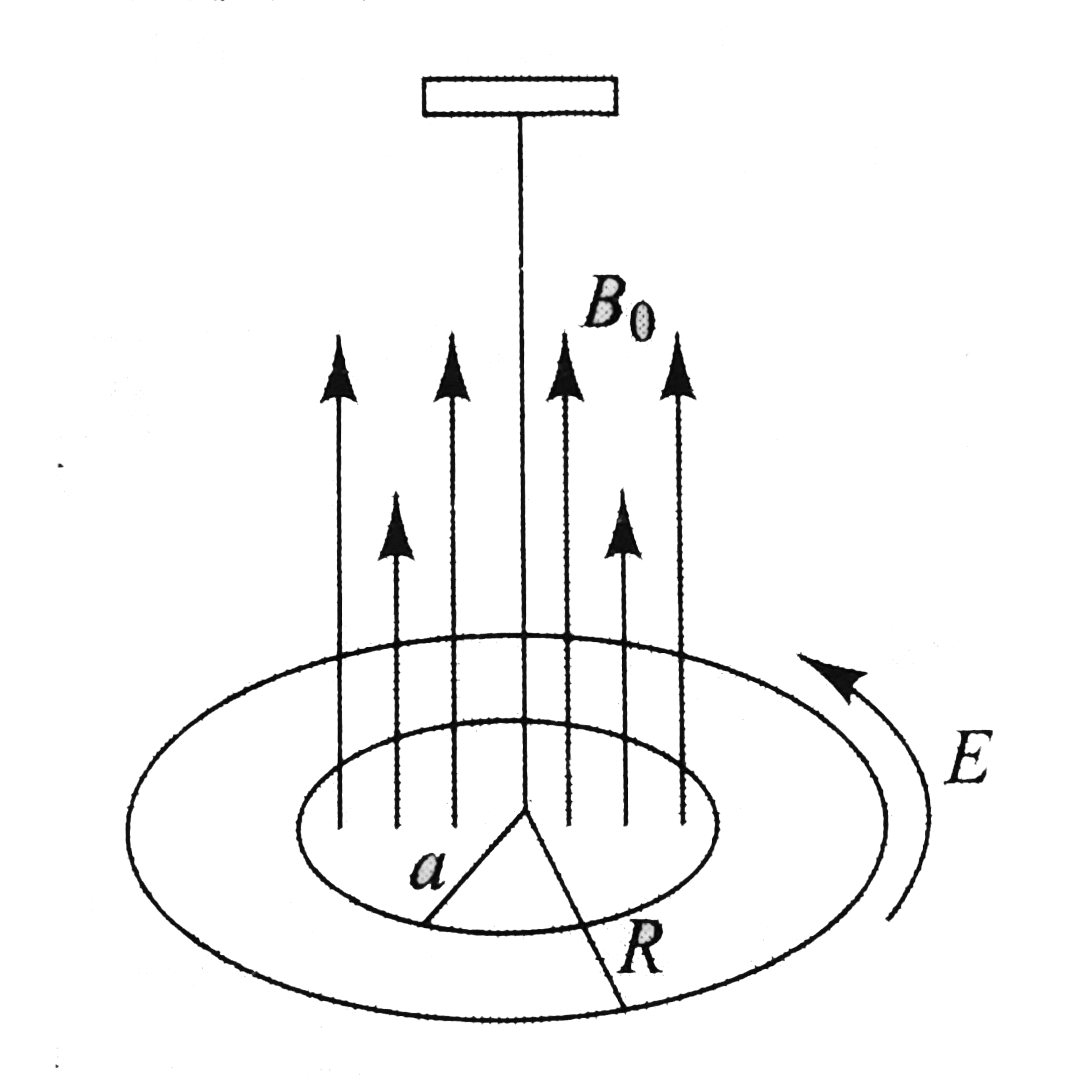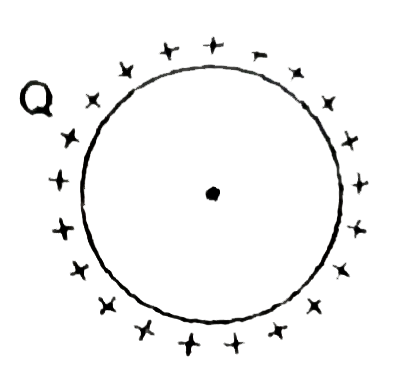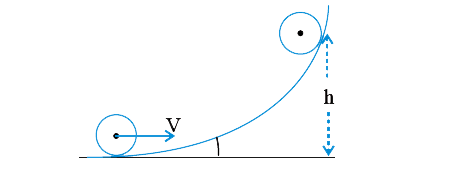A line charge with linear charge density λ is wound around an insulating disc of mass M and radius R, which is then suspended horizontally as shown in Fig. 3.90, so that it is free to rotate. In the central region, of radius a, there is a uniform magnetic field B0, pointing up. Now the magnetic field is switched off, which causes the disc to rotate.
Find the angular speed with which the disc starts rotating.

The induced electric field E due to the changing magnetic field is given by (from Faraday's law)
→ E.2πr=−πa2dBdt → E=−a22RdBdt
Hence, induced electric field is tangential to the disc as shown in Fig. 3.90 and its magnitude is E=a22RdBdt.
This electric field causes the disc to rotate. Now torque on the disc is τ=(λpuR)ER=πlambda2RdBdt.
Angular impulse:
L=∫τdt=∫πλa^(2)R(dB)/(dt)dt = piλa^(2)Rint dB = pi alpha a^(2)RB_(0)<br>NowL = Iomega<br>rarrpiλa^(2)RB_(0) = (MR^(2))/(2)omegararromega = (2pi lambda a^(2)B_(0))/(MR)
Topper's Solved these Questions
- ELECTROMAGNETIC INDUCTIONBOOK - CENGAGE PHYSICSCHAPTER - ELECTROMAGNETIC INDUCTIONEXERCISE - Solved Example
5 Videos
- ELECTROMAGNETIC INDUCTIONBOOK - CENGAGE PHYSICSCHAPTER - ELECTROMAGNETIC INDUCTIONEXERCISE - Exercise 3.1
15 Videos
- ELECTROMAGENTIC INDUCTIONBOOK - CENGAGE PHYSICSCHAPTER - ELECTROMAGENTIC INDUCTIONEXERCISE - QUESTION BANK
40 Videos
- ELECTRON,PHONTS,PHOTOELECTRIC EFFECT & X-RAYSBOOK - CENGAGE PHYSICSCHAPTER - ELECTRON,PHONTS,PHOTOELECTRIC EFFECT & X-RAYSEXERCISE - dpp 3.3
15 Videos
Similar Questions
Find the ratio of magnetic dipole moment and magnetic field at the centre of a disc. Radius of disc is R and it is rotating at constant angular speed o about its axis. The disc is insulating and uniformly charged
View SolutionA copper disc of radius 0.1 m rotates about its centre with 10 revolution per second in 'a uniform magnetic field of 0.1 T. The emf induced across the radius of the disc is -
View Solution
Knowledge Check
A nonconducting ring of uniform mass m, radius b and uniform linear charge density λ is suspended as shown in figure in a gravity free space. There is uniform coaxial magnetic field B0, pointing up in a circular region of radius 'a' (<b). Now if this field is switched off, then:-
 AThere will be induced electric field on periphery of ring, in anticlockwise sense when seen from aboveBInduced electric field imparts angular momentum of magnitude λπa2bBoCFinal angular velocity of ring will be more if time taken to switch of the field Bo is smallDFinal angular velocity will always be independent of time taken to switch off the field Bo
AThere will be induced electric field on periphery of ring, in anticlockwise sense when seen from aboveBInduced electric field imparts angular momentum of magnitude λπa2bBoCFinal angular velocity of ring will be more if time taken to switch of the field Bo is smallDFinal angular velocity will always be independent of time taken to switch off the field BoCharge Q is uniformly distributed on the rim of a thin insulating disc of mass m which is initially at rest and placed on a smooth horizontal surface. What will be the angular velocity of the disc if a magnetic field B, perpendicular to the plane of the disc is switched on ?
 AQB/2mBQB/3mC2QB/3mDQB/m
AQB/2mBQB/3mC2QB/3mDQB/mA ring of mass m, radius r having charge q uniformly distributed over it and free to rotate about its own axis is placed in a region having a magnetic field B parallel to its axis. If the magnetic field is suddenly switched off, the angular velocity acquired by the ring is:
AqBmB2qBmCqB2mDNone of these
A straight wire, of length L, carrying a current I, stays suspended horizontally in mid air in a region where there is a uniform magnetic field →B. The linear mass density of the wire is λ. Obtain the magnetic of this magnetic field.
View SolutionA disc of mass M and radius R rolls on a horizontal surface and then rolls up an inclined plane as shown in the figure. If the velocity of the disc is v, the height to which the disc will rise will be:

View SolutionA charged particle of mass m and charge q describes circular motion of radius r in a uniform magnetic field of strength B. The frequency of revolution is
View SolutionA copper disc of radius 0.1m rotates about its centre with 10 revolutuion per second in a uniform magnetic field of 0.1 tesla. The emf induced across the radius of the disc is
View SolutionA: magnetic field is produced by moving charges(s).
R: The magnetic field in the central region of a solenoid is uniform.
View Solution
